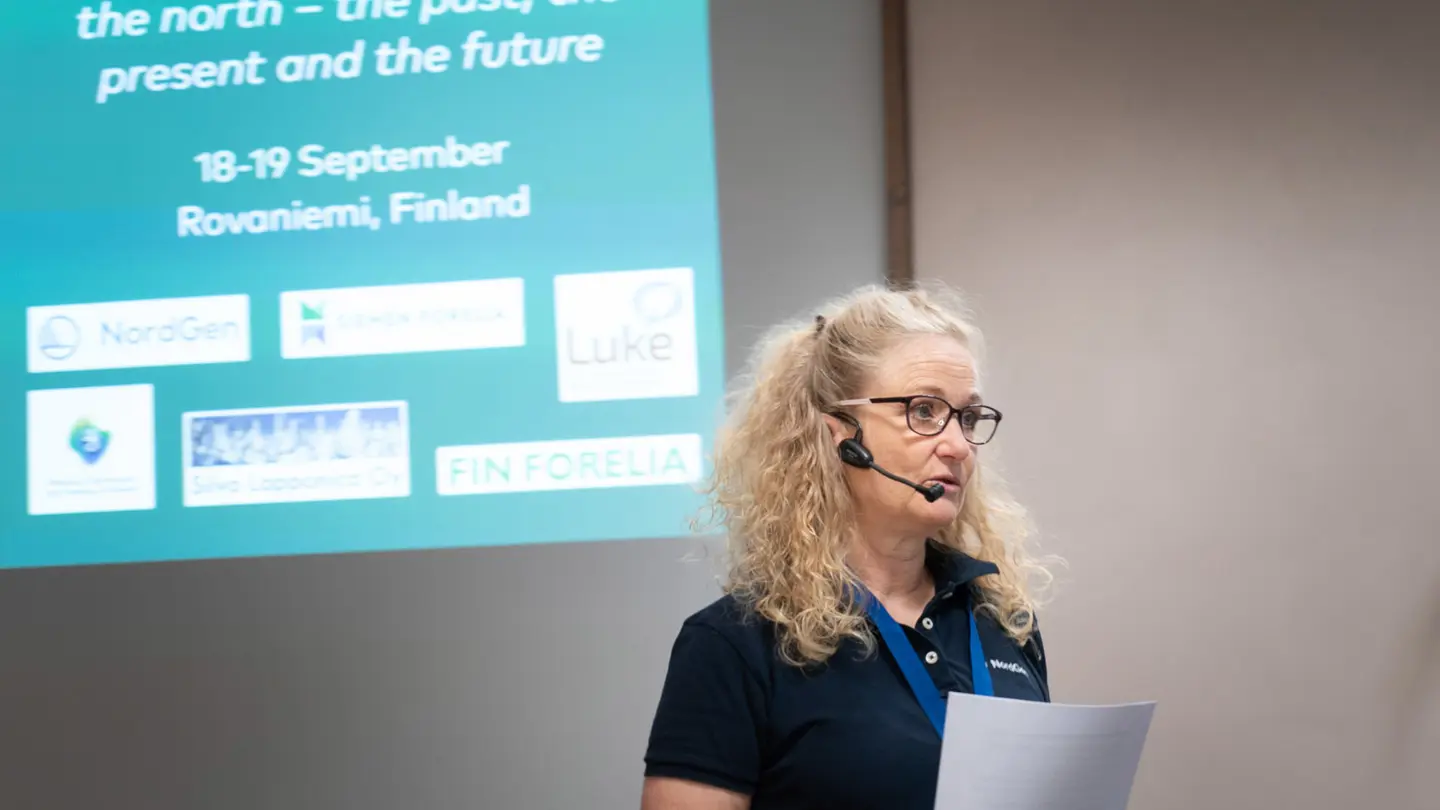
Forest regeneration in the north focal point at the annual NordGen Forest Conference in Rovaniemi
The status of Nordic forest nurseries, peat substitutes and Scots pine blister rust. These and many other topics were discussed earlier this week in Rovaniemi at the NordGen Forest Conference 2024. In addition to interesting lectures, the conference program also included forest excursions in the surrounding area.
Top photo: Conference participants during the excursion visit to Fin Forelia Oy.
Earlier this week, NordGen and partners (see facts below), arranged the forest conference “Forest regeneration in the north – the past, the present and the future” in the Finish town Rovaniemi, located near the Arctic Circle. More than 50 persons participated in the first day of the conference to listen to 15 speakers. Timo Salminen, Managing Director at Fin Forelia Oy welcomed the audience, followed by the second opening speech given by NordGen's Executive Director, Lise Lykke Steffensen:
“What we do today has a great impact on the future and the next generations to come. Forests are very important for the Nordic countries and the genetic material we use is of great importance to the whole society,” said Steffensen.

The conference program revolved around forest tree seed and seedling production with a certain focus of the history, current state, and future of forest regeneration in this northern region of Finland.
Nordic knowledge sharing
The first presentation of the day was given by Katri Himanen, Senior Scientist at Natural Resources Institute Finland (Luke). In her presentation she talked about the work with the OptFORESTS questionary. OptFORESTS is a Horizon Europe project funded by the European Union to enhance diversity and resilience of future European forests. One of the thematic lines within the project is strengthening the European forest nursery sector to be able to achieve the European Green Deal of planting 30 billion forest tree seedlings. Therefore, an online questionary targeting nurseries was created to obtain a comprehensive overview on the nursery sector, it’s production, capacity and market situation. In total 278 responses from 30 countries were received. Among other things, the survey showed that the annual loss in seedlings was around 30 percent in the Northern Europe (the Nordic and the Baltic countries), which is a higher percentage compared to other regions in the questionary.
“To me it was slightly surprising that we loose quite many seedlings in the Nordic region. On the other hand, the questionary shows that the annual discard rate among the nurseries in the Nordic countries is about ten percent, which is lower compared to other parts of Europe,” said Himanen and continued:
“The OptFORESTS questionary also showed that we are good at knowledge sharing in the northern countries and I think that this conference is an example of that.”

Successful tests and rust attacking Scots pine
The next speaker in the program, Minna Kivimäenpää, Senior Scientist at Luke, talked about Norway spruce seedlings growning in peat substitutes. In several Nordic countries there is a debate going on about the future of peat production and negative effects on climate change. Therefore, research has been conducted by Luke on seven different peat substitutes, for example, mixes containing moss and/or wood fiber.
“We need alternative growing media to peat. Five of seven peat substitutes that we tested produced field-ready Norway spruce seedlings and all thrived in the test field under climate change conditions. Another important experience is that the growing media didn’t affect the yield,” said Kivimäenpää.
Several presentations approached different aspects of the impact of climate change on Nordic forestry. This was also an element in the presentation from Henrik Svennerstam, researcher at Skogforsk in Sweden. In his presentation he talked about the disease Scots pine blister rust (Cronartium pini) which is a problem in Swedish forestry. During the years, nine inventories in Sweden, at least partly, have focused on Scots pine blister rust.
“This disease occurs in entire Sweden but most problematic in the north. In Norrbotten (North Bothnia), Scots pine blister rust was found in 87 % of the stands. We identified higher site productivity and sites suitable for spruce as risk factors and we fear that the problems with Scots pine blister rust will increase with climate change”, said Svennerstam.
During the second day of the conference, the participants were offered to take part in full day of forest excursions in the region. The trip included interesting visits to Siemen Forelia Oy seed center and Fin Forelia forest tree nursery, both located in Imari. The excursion program ended in Kivalo experimental forest for a walk along the tree species trail.


FACTS: NordGen's forest conferences
The forest conference is arranged annually by NordGen in close cooperation with the national representatives who are members of NordGen Forest Regeneration Council. The Nordic countries take turns hosting the conference, next year it will take place in Iceland. The conference in Rovaniemi was arranged in cooperation between Luke, NordGen, Siemen Forelia Oy, Fin Forelia Oy, the Ministry of Agriculture and Forestry Finland and Silvia Lapponica Oy.